Technologies
I Tried an AR Laptop. It’s Way Ahead of Its Time
The Spacetop is like a Chromebook for AR headsets. With Apple’s hardware looming, it also feels like a reminder of how computers could change.
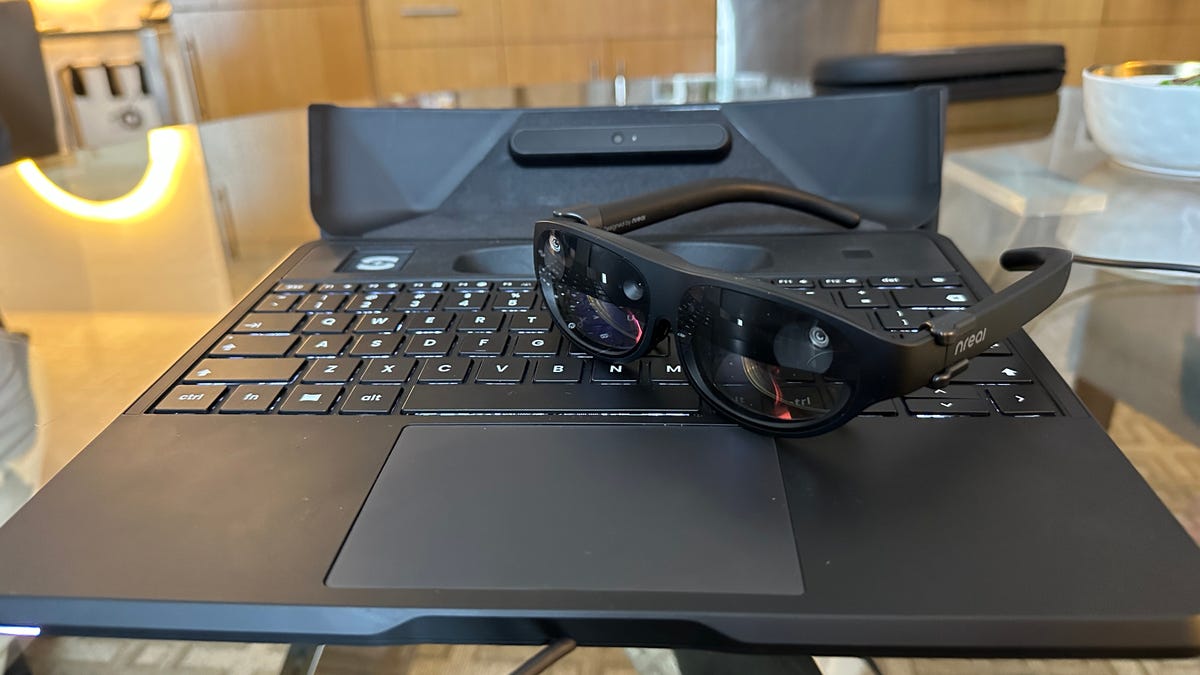
A small keyboard and trackpad lies in my lap. But there’s no screen. Not that you can see, anyway. To me, I have a curved wraparound workspace with dozens of windows open. I’m seeing it on a pair of AR glasses (with prescription inserts) perched on my nose.
I first tried the Spacetop in Las Vegas back in January, but the company that developed it, Sightful, is finally announcing the early-access product experiment now. I’ve seen tons of AR and VR headsets, but very few unique peripherals designed to work together with these future goggles and glasses. Instead of gaming or social experiences, Spacetop’s main pitch is to turn laptops into AR-assisted devices with endless virtual displays.
If that sounds like a weird pitch, consider that I’ve already lived it. I’ve paired Meta’s Quest Pro to my laptop to extend its virtual monitors around my head, and plenty of solutions like this already exist using available apps. The interfaces can be clunky, and the hardware isn’t totally made to be mobile. Spacetop’s keyboard base, with its own Qualcomm processor inside, acts as a spatially tracked anchor that the AR glasses can follow and track the floating displays to. The tracking can work while in motion in a car or plane, and a button on the keyboard can make the floating displays vanish for an in-room conversation with someone, toggling the virtual screens on and off.
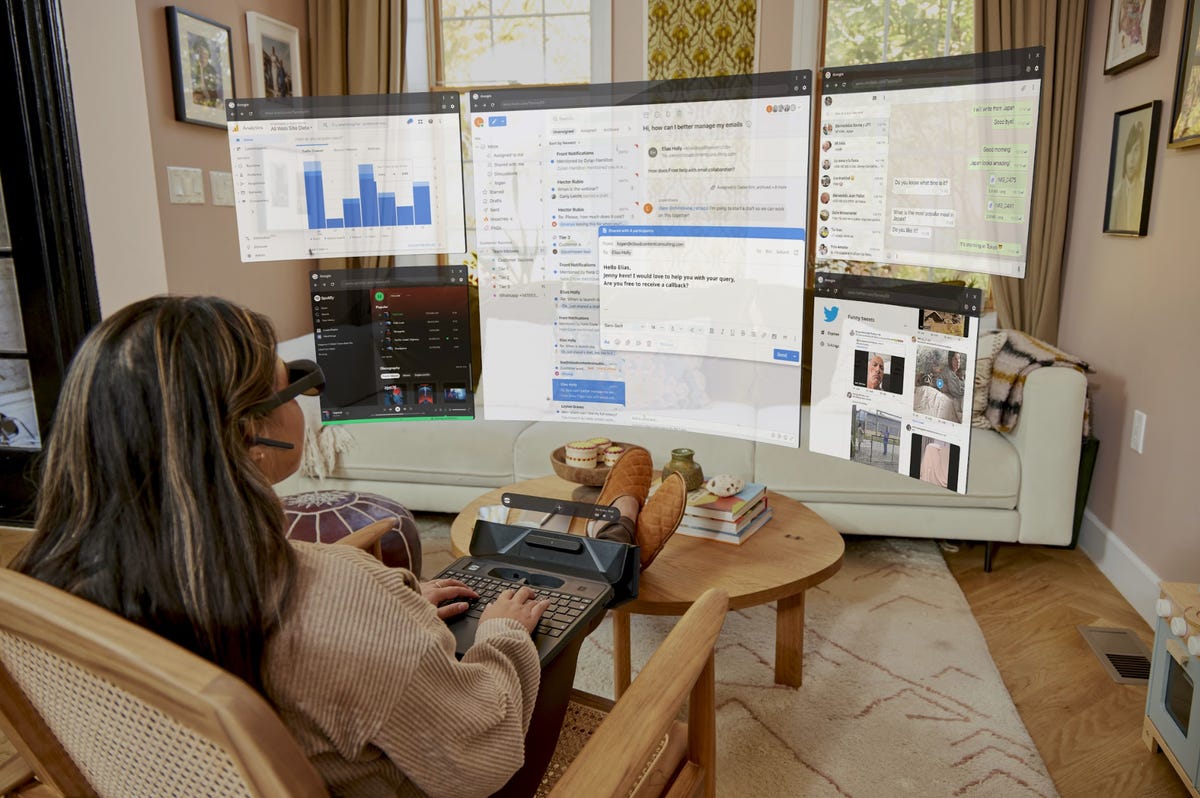
This visualization of working on Spacetop is actually very similar to the experience of using it, except the field of view at any time is smaller (imagine viewing through a narrower window).
The Spacetop comes with a pair of NReal Light AR glasses as part of its package, which need to be physically tethered to the keyboard to work. Sightful’s founders are planning for wireless options eventually, but found the tethered option more reliable for consistent tracking right now. Also, the whole concept could eventually work with other AR and mixed-reality headset hardware down the road.
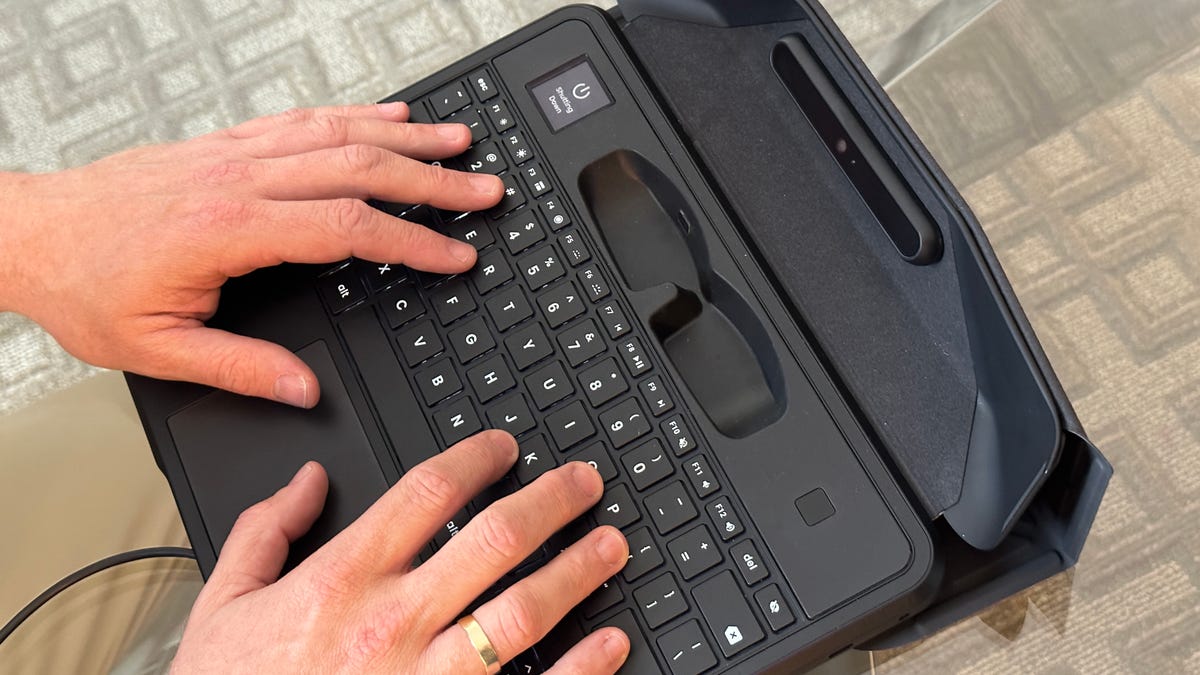
The Spacetop’s keyboard. No screen, just a base. There’s a cradle for the AR glasses.
That would make sense, considering how many devices should be on their way: Apple’s, to start, and whatever Samsung, Google and Qualcomm are cooking up in the next year or so. NReal’s glasses are fine, but don’t work over my own glasses. Instead, I had to use prescription inserts, which Sightful will make for buyers of the hardware. The inserts I tried weren’t a perfect match, but were enough to appreciate that the display resolution was more than good enough for monitor readouts. The field of view, however, is narrower than most VR headsets: it can show something like a 40-inch TV screen as seen across a table, but I have to turn my head to see the other floating windows of other minimized browsers in the Spacetop’s Chrome-like software interface.

Sightful’s co-founder, Tomer Kahan, demoing Spacetop with me. I worked on it, too.
Zooming into displays, or scrolling around, is all done through trackpad and keyboard work. The keyboard itself is the interface.
Sightful’s team has experience in AR: Founders Tamir Berliner and Tomer Kahan came from Magic Leap, and Berliner also founded Primesense, the depth-sensing technology that powered Microsoft Kinect and which Apple acquired as the foundation to its Face ID TrueDepth camera.
As Apple’s headset begins to imagine how mixed reality could work with other devices — perhaps iPads, or the Apple Watch — upcoming glasses and goggles will start to imagine working better with phones or laptops, and other tools to come. It makes sense that new peripherals would arrive as well — not just controllers, but tracking rings, wearable trackers and a new wave of keyboards designed specifically for mixed reality.
I think Spacetop is a bit ahead of the curve here, and while it’s designed as a primary computer with its own headset, the future may belong to smart accessories that evolve from this idea to work with more headsets to come. If VR and AR are ever going to be more than just places for games, better work tools need to arrive. Spacetop is a pretty fascinating first step to what I imagine will be a lot more on this front.
Technologies
Today’s NYT Strands Hints, Answers and Help for Dec. 5 #642
Here are hints and answers for the NYT Strands puzzle for Dec. 5, No. 642.
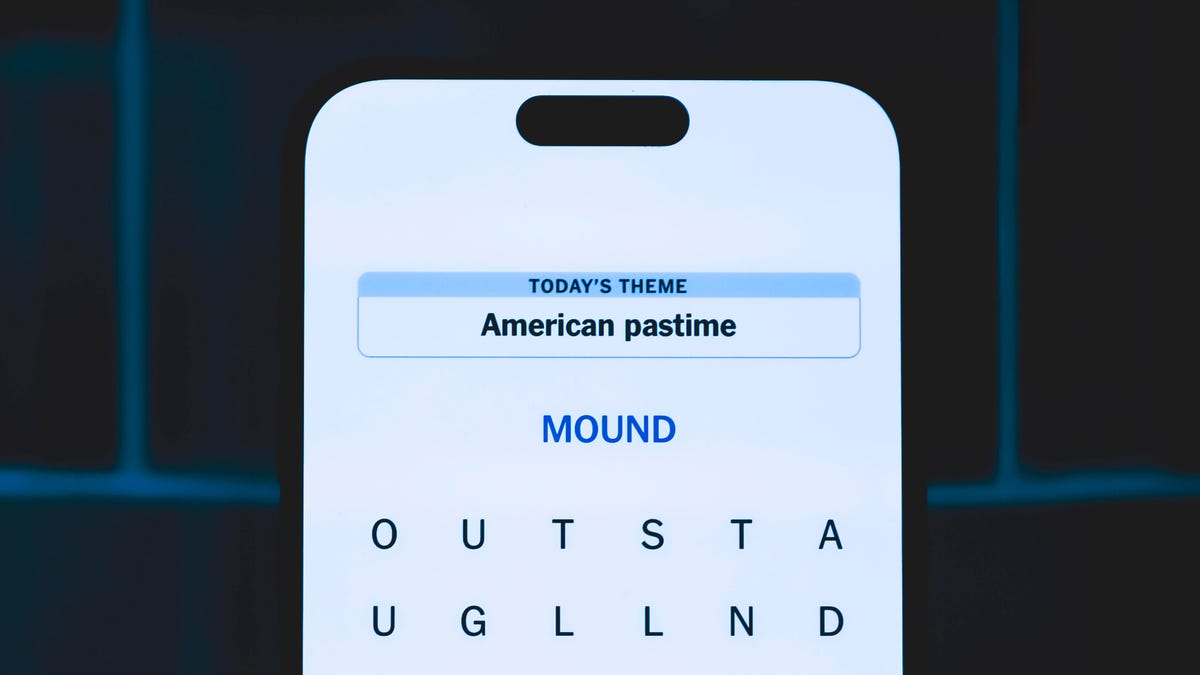
Looking for the most recent Strands answer? Click here for our daily Strands hints, as well as our daily answers and hints for The New York Times Mini Crossword, Wordle, Connections and Connections: Sports Edition puzzles.
Today’s NYT Strands puzzle is a fun one, and the theme is interesting. Some of the answers are difficult to unscramble, so if you need hints and answers, read on.
I go into depth about the rules for Strands in this story.
If you’re looking for today’s Wordle, Connections and Mini Crossword answers, you can visit CNET’s NYT puzzle hints page.
Read more: NYT Connections Turns 1: These Are the 5 Toughest Puzzles So Far
Hint for today’s Strands puzzle
Today’s Strands theme is: Feeling peckish?
If that doesn’t help you, here’s a clue: Can I see a menu?
Clue words to unlock in-game hints
Your goal is to find hidden words that fit the puzzle’s theme. If you’re stuck, find any words you can. Every time you find three words of four letters or more, Strands will reveal one of the theme words. These are the words I used to get those hints but any words of four or more letters that you find will work:
- BAKE, BAKER, BONE, BONES, SIRS, FUNS, FACT, BUTT, DIET, DIETS, GREW, STEW, GOUT, DINE, NEST, NETS, TEAK
Answers for today’s Strands puzzle
These are the answers that tie into the theme. The goal of the puzzle is to find them all, including the spangram, a theme word that reaches from one side of the puzzle to the other. When you have all of them (I originally thought there were always eight but learned that the number can vary), every letter on the board will be used. Here are the nonspangram answers:
- BAKERY, CAFE, BISTRO, BUFFET, BREWERY, STEAKHOUSE
Today’s Strands spangram
Today’s Strands spangram is DININGOUT. To find it, start with the D that is three letters to the right on the top row, and wind down.
Don’t miss any of our unbiased tech content and lab-based reviews. Add CNET as a preferred Google source.
Technologies
Today’s NYT Mini Crossword Answers for Friday, Dec. 5
Here are the answers for The New York Times Mini Crossword for Dec. 5.
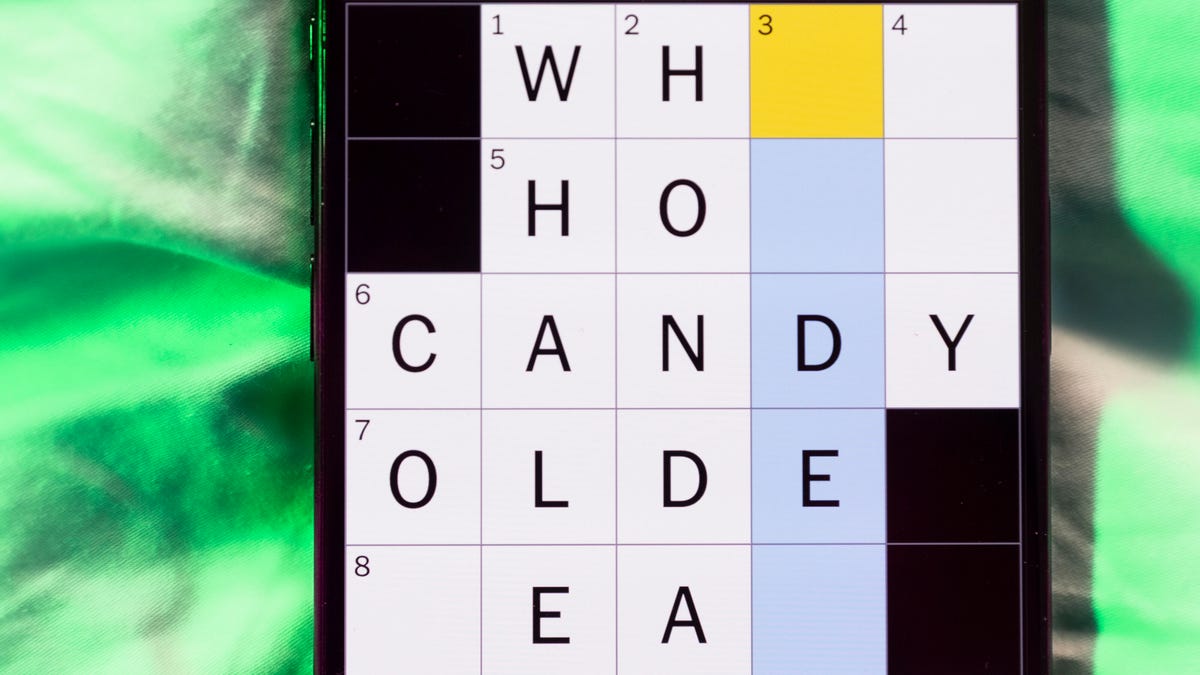
Looking for the most recent Mini Crossword answer? Click here for today’s Mini Crossword hints, as well as our daily answers and hints for The New York Times Wordle, Strands, Connections and Connections: Sports Edition puzzles.
Need some help with today’s Mini Crossword? Three of the clues involve a now-infamous Gen Z/Gen Alpha joke, so you might want to have a young person nearby. Read on. And if you could use some hints and guidance for daily solving, check out our Mini Crossword tips.
If you’re looking for today’s Wordle, Connections, Connections: Sports Edition and Strands answers, you can visit CNET’s NYT puzzle hints page.
Read more: Tips and Tricks for Solving The New York Times Mini Crossword
Let’s get to those Mini Crossword clues and answers.
Mini across clues and answers
1A clue: Beaver’s building project
Answer: DAM
4A clue: Unit of distance originally equivalent to 1,000 paces
Answer: MILE
5A clue: Number of dwarfs or deadly sins
Answer: SEVEN
6A clue: Extra-large film format
Answer: IMAX
7A clue: Crosses (out)
Answer: XES
Mini down clues and answers
1D clue: Difficult-to-work-with stars
Answer: DIVAS
2D clue: U.S. soccer star ___ Morgan
Answer: ALEX
3D clue: Roughly half of the adult population
Answer: MEN
4D clue: 5-Down-5-Across, for one
Answer: MEME
5D clue: Broadway musical about the wives of Henry VIII
Answer: SIX
Don’t miss any of our unbiased tech content and lab-based reviews. Add CNET as a preferred Google source.
Technologies
The Mystery of the iPhone 17 Pro’s Missing Night Mode for Portraits
Is it a bug? Is it a technical issue? Or did Apple just yank a camera feature that wasn’t popular?

It’s a mystery. Night mode isn’t available in Portrait Mode on the iPhone 17 Pro, and no one seems to know why. Yet.
Night mode automatically brightens photos and captures more details, even in low-light conditions. You can adjust the exposure time manually. In Portrait mode, the camera focuses sharply on the subject you’re snapping and blurs the background, creating a depth-of-field effect.
The first clue that Night mode for Portrait mode was gone came from an Apple support document titled Take Night mode photos with your iPhone camera. It states what many iPhone aficionados already know: «Night mode automatically brightens photos and captures more detail in low light.»
Don’t miss any of our unbiased tech content and lab-based reviews. Add CNET as a preferred Google source.
Night mode for the iPhone 17 Pro is listed in two separate parts of the iPhone online user guide (here and also here) for selfies and time-lapse photos. But it isn’t included on the guide’s list for snapping Night mode photos in Portrait mode. The feature is still available on iPhone Pro and Pro Max on the 12, 13, 14, 15 and 16 series.
Upon investigation, CNET staffers verified that, indeed, Night mode is no longer an option in Portrait mode with the iPhone 17 Pro.
An Apple representative didn’t immediately respond to a request for comment.
When the iPhone 17 Pro was launched in September, Andrew Lanxon, CNET’s lead photographer in Europe, was impressed by the camera upgrades over the iPhone 16 Pro, including optical zoom that doubled to 8x, a telephoto camera sensor 56% larger than before and 48 megapixels of resolution.
Lanxon, a professional photographer and YouTuber, was excited to get shooting with the iPhone 17 Pro. But apparently, he will have to do without Night mode in Portrait mode.
Why did Apple do it?
Why was Night mode removed? «There doesn’t appear to be a hardware reason for it,» said CNET senior writer Jeff Carlson. «The Lidar camera that helps with low-light focusing and depth perception is still there. Perhaps it’s a software issue, but as of the iOS 26.2 release candidate, the feature isn’t present.»
Carlson found it curious that it’s taken three months since the launch of the new pro model before people noticed that it’s missing. He speculates that the feature was possibly removed because it «wasn’t being used and Apple could devote other processing resources elsewhere,» he said. «Perhaps something broke in the development of the new operating system and revamped Camera app, and it hasn’t been a high enough priority to fix in the regular release schedule.
«People have gotten used to having iPhone models that enable shots that are otherwise difficult for smartphone cameras, especially on a flagship like the iPhone 17 Pro,» Carlson said. «I hope the feature returns to give everyone the most control over the photos they capture.»
One parallel might be what Samsung did earlier this year — removing S Pen Bluetooth connectivity on the new S25 Ultra. Samsung said they removed the feature because not many people were using it. Is Apple doing the same thing with Night mode for portraits?
Some people miss it, some don’t
A subreddit on the topic appeared to be a mix of «who cares» and «oh darn.» Redditor kaoss_pad was «low key happy» that the feature had vanished, saying that «it would often surprise me and activate when I didn’t want it and ruin a moment.»
Some Redditors weren’t even aware of the feature. CultofCedar posted, «lol didn’t even notice that wasn’t a thing,» and Successful-Cover5433 wrote, «I didn’t even know you could.»
A couple of folks weren’t happy about the mysterious disappearance, including nsfdrag, who posted, «Kind of a bummer, I like the feature.»
-

 Technologies3 года ago
Technologies3 года agoTech Companies Need to Be Held Accountable for Security, Experts Say
-

 Technologies3 года ago
Technologies3 года agoBest Handheld Game Console in 2023
-

 Technologies3 года ago
Technologies3 года agoTighten Up Your VR Game With the Best Head Straps for Quest 2
-

 Technologies4 года ago
Technologies4 года agoBlack Friday 2021: The best deals on TVs, headphones, kitchenware, and more
-

 Technologies4 года ago
Technologies4 года agoVerum, Wickr and Threema: next generation secured messengers
-

 Technologies4 года ago
Technologies4 года agoGoogle to require vaccinations as Silicon Valley rethinks return-to-office policies
-

 Technologies4 года ago
Technologies4 года agoOlivia Harlan Dekker for Verum Messenger
-

 Technologies4 года ago
Technologies4 года agoiPhone 13 event: How to watch Apple’s big announcement tomorrow
